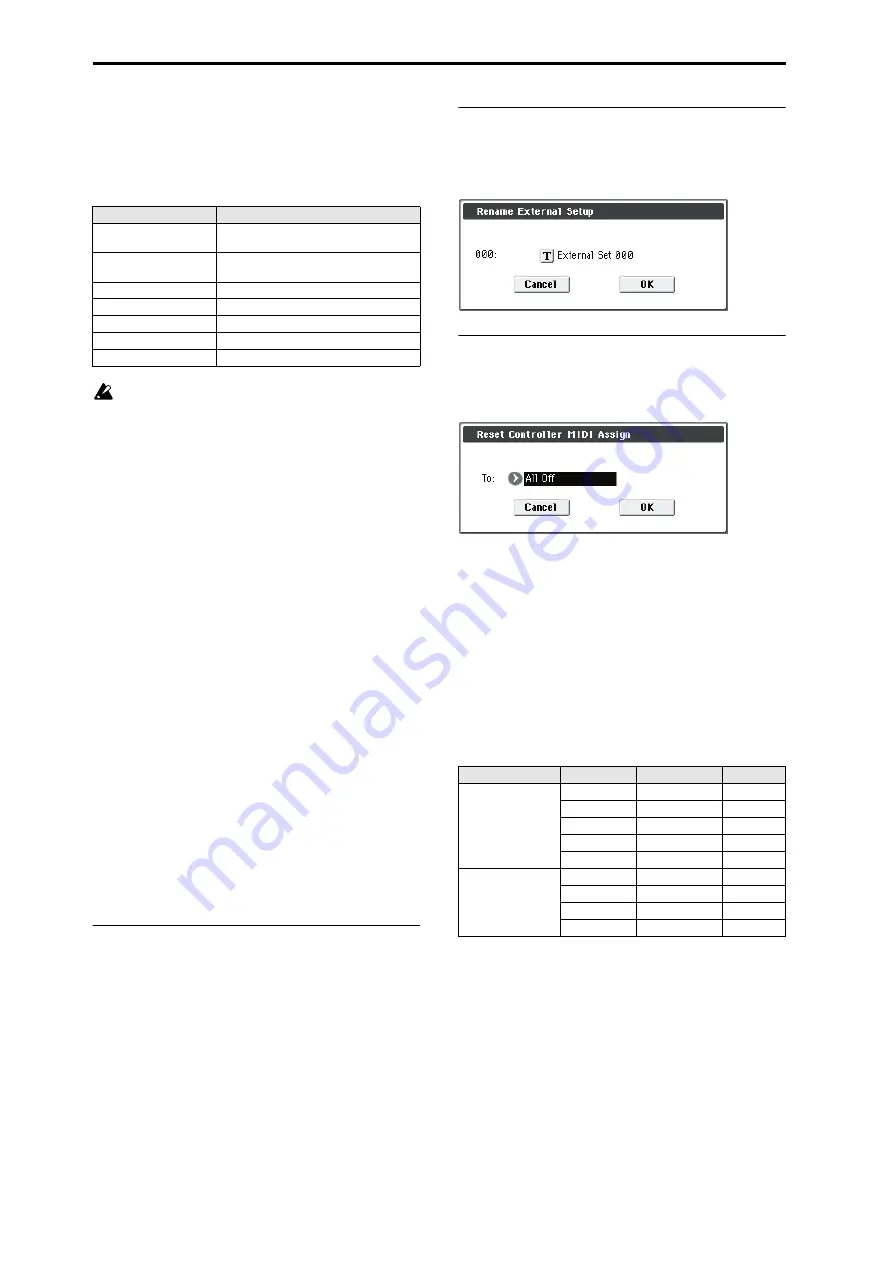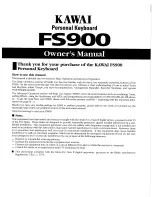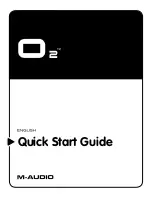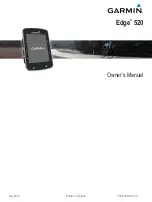
Global mode
254
Transmission and reception of any other MIDI data is
also impossible during this time. When receiving
multiple data dumps in succession, you must allow
enough time between each data dump for the message
to disappear from the screen. (see table below)
Processing time (MIDI) for writing into memory
MIDI cannot be transmitted or received while data is
being written into internal memory. Also, transmission
of Active Sensing (FEh) from the MIDI OUT connector
and USB connector will be halted.
Receiving a data dump
1. Connect the M50 with the device that will transmit the
data dump.
If you’re transmitting data from a computer, connect the
M50’s USB connector to your computer’s USB connector.
If you’re transmitting data from another M50 or from a
MIDI data filer, connect the target M50’s MIDI IN connector
to the MIDI OUT connector of the transmitting device.
2. Set the MIDI channel of the transmitting device to
match the M50’s global MIDI channel MIDI Channel
(Global 1–1a).
If you want the M50 to receive data that was previously
transmitted to a MIDI device, you must set the global MIDI
channel of the M50 to the same global MIDI channel that
was used when the data was transmitted.
To set the MIDI channel of the transmitting device, please
see the owner’s manual for that device.
3. Either check Enable Exclusive (Global 1–2b), or display
one of the menu commands of this page.
When one of these menu commands is displayed, data
dumps can be received regardless of the
Enable Exclusive
setting.
4. Transmit the data from the other device. For the proce-
dure, please see the owner’s manual for the device you
are using.
While the data is being received, the display will indicate
“Now receiving MIDI data.”
Reset External Setup
This command initializes the external setup.
All settings for knobs EXT 1–4, EXT 5–8, and chord trigger
switches 1–4 will be initialized for the selected setup
number.
MIDI Channel
= Gch
CC#, Note/CC#
=Off
Fixed Velocity
=127 (Chord Trigger switch only)
Rename External Setup
This lets you rename the external setup.
For more information, please see “Editing names” on
page 91 of the Owner’s manual.
Reset Controller MIDI Assign
This automatically assigns the MIDI control change
messages for each controller of the P2: Controllers– MIDI
CC# Assign page.
1. Set the To field to the desired reset method.
All Off:
All settings will be Off.
Default Setting:
The controlllers will all be set to Off; the X–
Y control will be set to its default CCs.
CC Default:
The parameters will be reset to the typical
settings, including the standard settings for the controlllers.
If you want to use the controllers with an external MIDI
device, we recommend using this setting.
(You are also free to assign different MIDI control change
messages to the controllers, if you wish.)
The default values are shown in the table below.
Reset Controller MIDI Assign Default
Type of data dumped
Processing time for writing into memory
All Programs
Approximately 1 second (each bank
received)
All Combinations
Approximately 1 second (each bank
received)
All Drum Kits
Approximately 1 second
All Arpeggio Pattern
Approximately 1 second
Global Setting
Approximately 1 second
Sequencer
Approximately 1 second
Drum Track Pattern
Approximately 1 second
Controllers \ to
Default Setting
CC Default
ARP Controllers
On/Off
CC#14
(CC#14)
Knob 1
CC#22
(CC#22)
Knob 2
CC#23
(CC#23)
Knob 3
CC#24
(CC#24)
Knob 4
CC#25
(CC#25)
Chord Trigger
(CC and Note)
SW 1
Off
(CC#110)
SW 2
Off
(CC#111)
SW 3
Off
(CC#112)
SW 4
Off
(CC#113)
Summary of Contents for M50-73
Page 1: ...2 E Parameter Guide ...
Page 86: ...Program mode 78 ...
Page 132: ...Combination mode 124 ...
Page 222: ...Sequencer mode 214 ...
Page 297: ...Effect Mixer Block Diagrams Main Outputs 289 ...
Page 418: ...Appendices 410 ...
















































